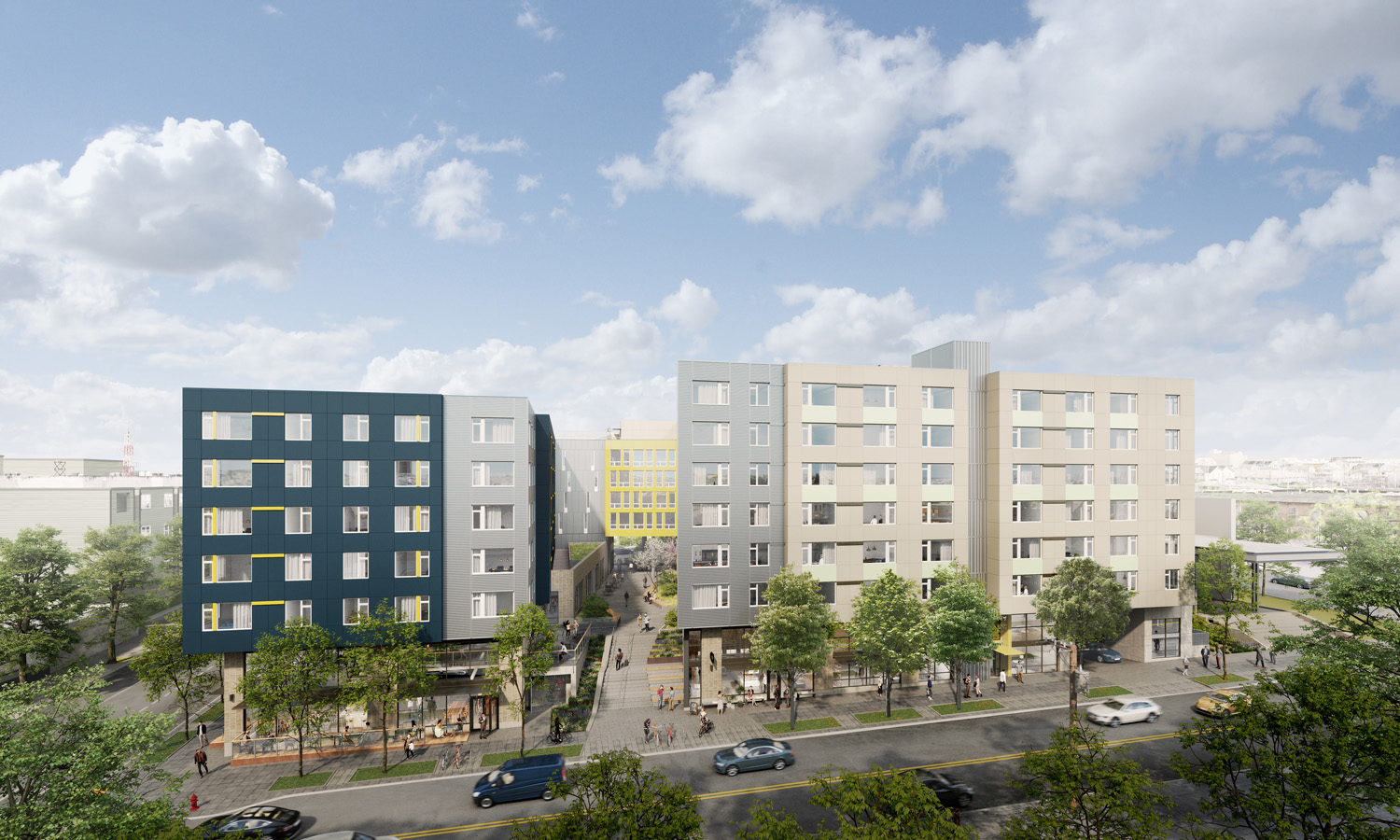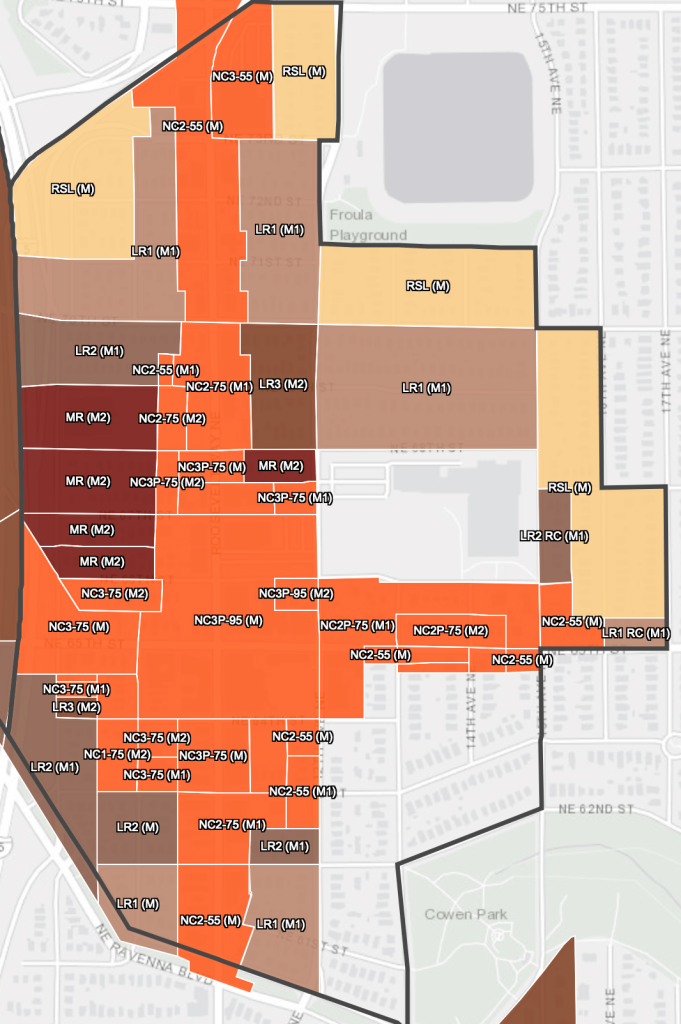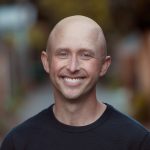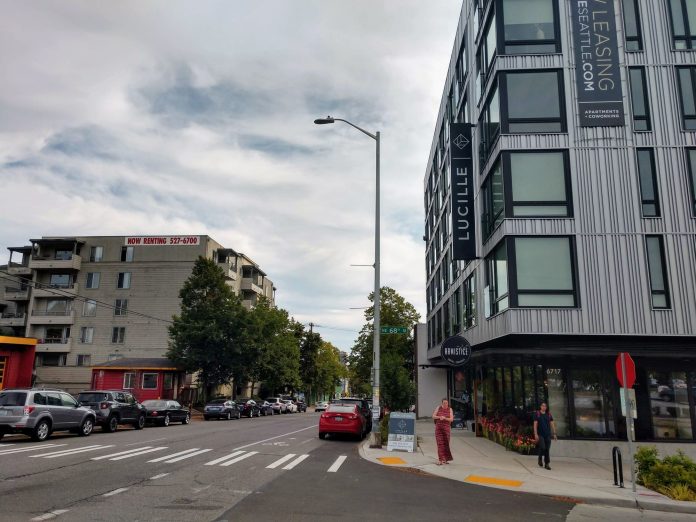With an overly limited urban village around its light rail station, Roosevelt could really use an expansion.
I moved my family to the edge of Roosevelt in 2016, right on the boundary with Ravenna and a few steps away from the University District. We came for the gorgeous parks, great schools, budding amenities, and the fact that it would soon be connected by subway to so much more of the city. With the blistering pace of development today, it’s clear we weren’t the only ones to notice. This growth will build up our local businesses and bring new ones to the area, which will make it an even better place to live. It will also make the neighborhood more inclusive, funding lots of subsidized housing via the Mandatory Housing Affordability (MHA) program.
And, speaking of inclusivity, we were delighted to see that most of our neighbors welcomed the 253 units of affordable housing and a daycare that are under construction right now at the light rail station. We are fast becoming a 15-minute neighborhood, and more importantly, a neighborhood that also understands it should include everyone.
But this wasn’t always true, and that past is about to haunt us, robbing taxpayers of our rightful return on investment, and excluding thousands of families from our neighborhood. I figured this out because I have been surprised to see low-density townhomes being built just a few steps from the brand new station. Nerd that I am, I pulled out the zoning maps. It turns out that dense developments, including even mid-sized multifamily buildings, are prohibited in a big part of the area around our brand new subway stop. In some spots, only single-family homes are allowed. My (very) rough count finds 86 acres of low-density zoning within a 10-minute walk. This does not include the single-family homes in the Ravenna-Cowen Historic District, which the City removed from the upzone and urban village in deference to homeowners who got the area placed on the National Register. Given that wrinkle, I kept it out of the count.
Limiting 86 acres to low-density housing when they are next to a shiny new subway station in a high-opportunity neighborhood is a reckless waste of resources. Northgate Link cost $1.9 billion, and Roosevelt is one of only three stops. Shouldn’t we aim to get more out of our $633 million in taxpayer investment? If the goal is a more connected, green Seattle, why limit ourselves to townhomes in this transit paradise? Townhomes are missing middle housing, which is a great addition to most communities. We need millions of units around the country. But land next to billion-dollar transit is vanishingly rare, and needs much wiser stewardship.
The return on high capacity transit investment can be measured in lots of ways: financial, impact on traffic, air quality, carbon emissions, convenience, connectivity to more of the city, access to jobs, walkability, noise, community development, and public health. All of those returns will be far higher if we fix this zoning mess now.
The rest of the walkable distance should match the ambition of the more intensive blocks in the area, like Centerline or the affordable Cedar Crossing. This would allow over 210 units per developable acre, plus space for other ground floor uses. This means that the 86 acres could hold 18,000 homes, along with loads of restaurants, coffee shops, daycares, pharmacies, grocery stores, dry cleaners, gyms, banks, bars, boutiques, and bookstores. More modest four-story and five-story buildings would allow 8,600 homes. It looks like building 12,000 homes is well within reach.

But the current single-family and sometimes townhome zoning on that land will generate fewer than 1,000 homes, confining the dense development to just a dozen blocks or so. That means we are using our city’s zoning authority to shut out 11,000 families, preventing them from living next to an expensive light rail station paid for by those same taxpayers. If we let them in, they’d have easy, low carbon access to hundreds of thousands of jobs, outstanding schools, sumptuous parks, and a walkable neighborhood. Through MHA, it would fund 1,000 affordable homes for families that need some extra help. Instead, our plan is to keep single-family homes or build housing that is just large enough that it will take generations before more intensive replacement pencils out. Neither contributes much to affordable housing. It is inefficient, unjust, and environmental sabotage.

Why talk about inclusive, 15-minute cities if we aren’t even willing to commit the small sliver of land around a subway stop to being a fully utilized 15-minute neighborhood? If Seattle wants to show the nation what a progressive city can do, we have to commit. If we want people to have access to livable, environmentally responsible, and upwardly mobile lifestyles, we have to tear the gates off all the unused land in our high opportunity, transit connected communities.
Roosevelt would be a great place to start. We’ve come a long way since neighbors fought to keep the light rail mostly just for themselves. We are more progressive, more aware of the risks of climate change, more attuned to the value of a walkable, connected neighborhood, more tired of driving on Seattle roads. It’s time for Roosevelt to lead the way for our city.

Ron Davis (Guest Contributor)
Ron Davis is an entrepreneur, policy wonk, political consultant, and past candidate for Seattle City Council. He is focused on making his community a place where anyone can start a career, raise a family, and age in place without breaking the bank. He has a JD from Harvard Law School and lives in Northeast Seattle with his wife — a family physician — and their two boys.

